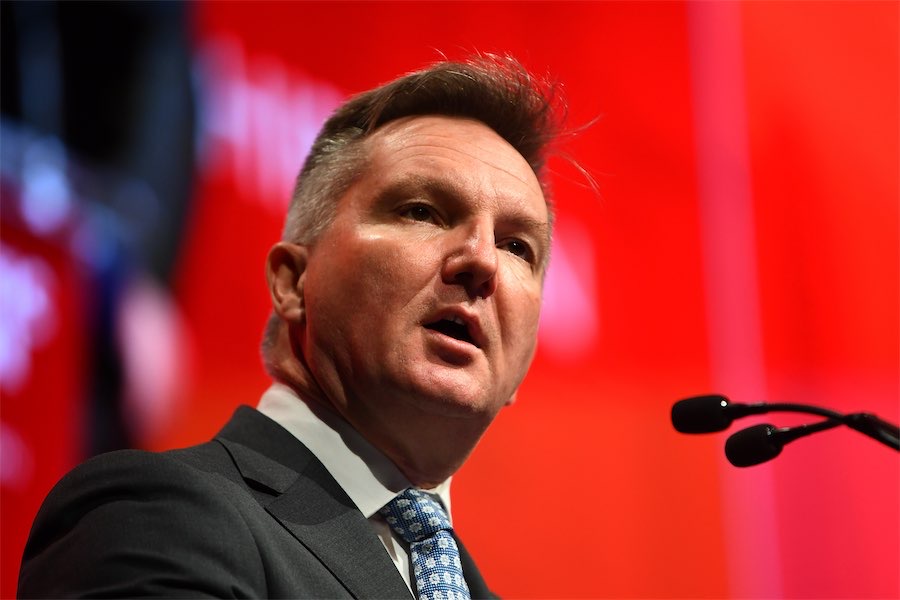
By Dominic Giannini in Canberra
A boost in renewable technology investment is being spruiked as evidence wind and solar power in Australia trumps a plan for nuclear energy.
The Clean Energy Regulator is expecting an average of more than 40 per cent of the energy grid to come from renewable energy in 2024.
Renewable capacity being installed in 2024 could be enough to power about 3.5 million households, the energy minister estimated using the regulator’s figures of seven gigawatts of renewable energy capacity.
Energy Minister Chris Bowen seized on the figure to underscore the efficacy of the federal government’s push to boost investment in the sector as it moves to reach a 2030 target of 82 per cent renewable energy in the national grid.
Solar was getting more accessible and was hundreds of dollars cheaper than a year ago, he said, citing the report.
Mr Bowen used the report’s findings to pillory Opposition Leader Peter Dutton’s plan to build seven nuclear reactors across five states and back up the energy grid by extending the life of coal plants.
Mr Dutton hasn’t released the cost of the plan, causing Mr Bowen to accuse him of “treating the Australian people, quite frankly, with quite arrogant contempt”.
The coalition’s plan was based on “a very clear misunderstanding or misrepresentation by Peter Dutton about the respective energy mixes that are options for Australia”, he said.
Australia won’t meet its net-zero emissions target by 2050 without nuclear energy, Mr Dutton argues, as he slams the cost of wind and solar energy.
Mr Bowen said this ignored Australia’s wind and solar potential stemming from its unique geography and expert estimates about nuclear cost blowouts.
Gas would be used as a backstop as part of Labor’s plan and could be fired up with two minutes’ notice and not spew harmful emissions when it wasn’t operating, he said.
This was in contrast to the opposition’s plan to extend the lifespan of Australia’s coal-fired plants which were losing reliability as they aged and needed to run constantly when used as a backup, which was terrible for emissions, Mr Bowen said.
“The biggest threat to reliability in our energy system now is coal-fired power stations,” he said.
“We haven’t had a day in the last year where we haven’t had an unexpected outage from a coal-fired power station. They don’t get more reliable as they get older.”
The coalition has also criticised Labor for running transmission lines across agricultural land with the Nationals calling for adequate compensation for farmers amid anger from the community.
Mr Bowen has sought to neuter some of the criticism from the sector by appointing former Nationals Farmers’ Federation head Tony Mahar as the energy infrastructure commissioner to work as an intermediary with farmers.
Mr Mahar was a great choice as he had dedicated his life to championing rural and regional Australia, he said.
“He understands agriculture, he understands the regions, knows there are opportunities for rural and regional Australia from this renewable energy transformation,” he said.
This included income from solar and wind technology on their land while continuing farming, he said, pointing to the example of Australia’s largest solar farm still having 6000 sheep.
Who can be trusted?
In a world of spin and confusion, there’s never been a more important time to support independent journalism in Canberra.
If you trust our work online and want to enforce the power of independent voices, I invite you to make a small contribution.
Every dollar of support is invested back into our journalism to help keep citynews.com.au strong and free.
Thank you,
Ian Meikle, editor





Leave a Reply